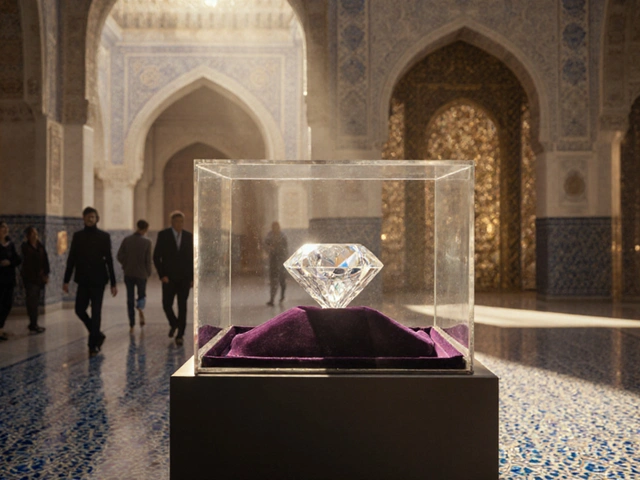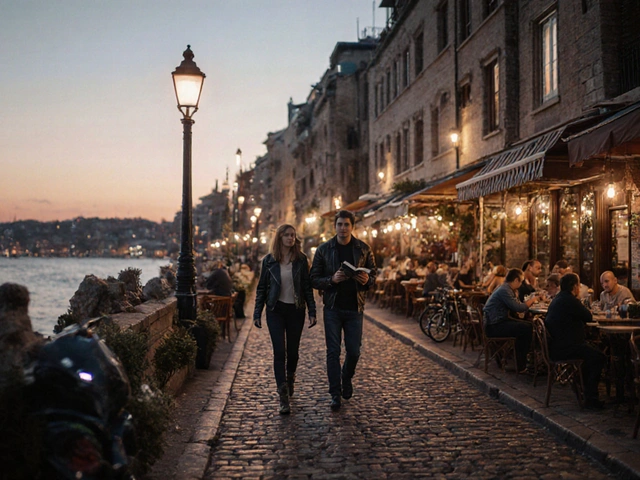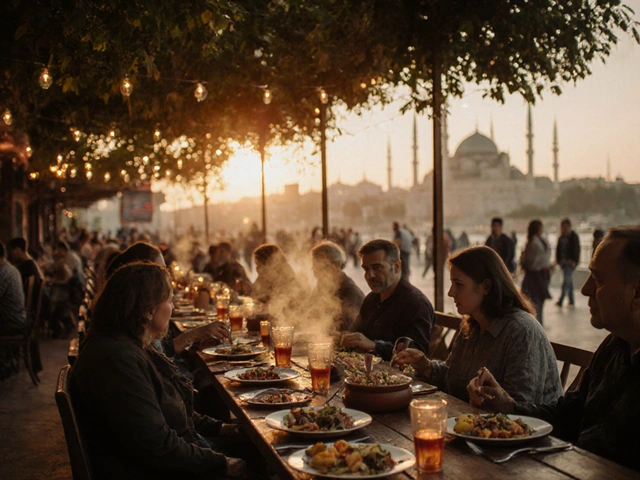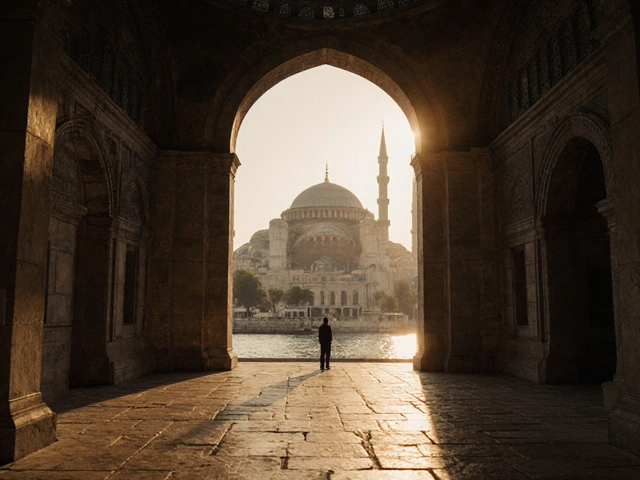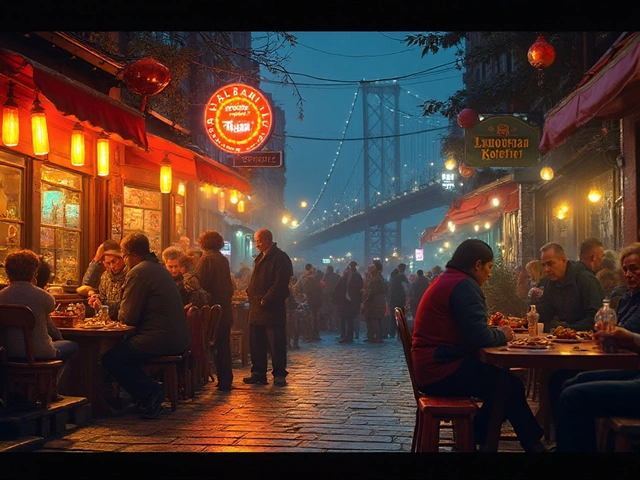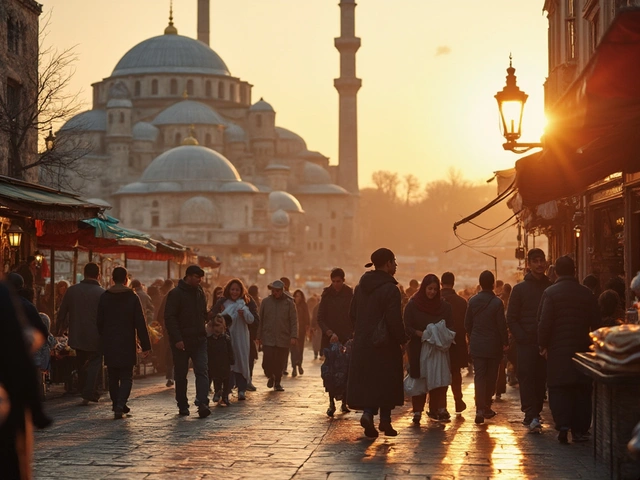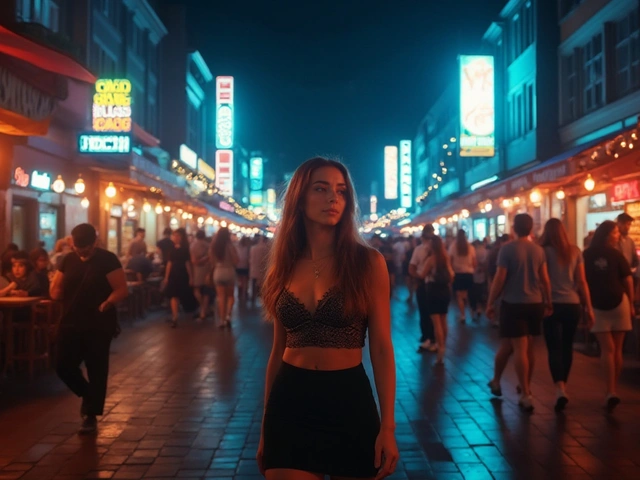Picture this: you're standing in the heart of Istanbul’s market, catching the salty breeze from the Bosphorus, gazing at silhouettes of minarets cutting the fiery sunset sky. You can’t separate the city from its architectural wonders—the way the Hagia Sophia, Blue Mosque, and the Galata Tower don’t just fill postcards but shape the spirit of Istanbul itself. Here, buildings hold stories thicker than baklava syrup, and every curve or dome reflects centuries of struggles, hope, and pride. This isn’t just history trapped in stone—these are the landmarks that give every Istanbullu, whether you call Moda or Balat home, a sense of place and identity. Let’s peel back the layers on how these remarkable buildings define Istanbul’s soul, affect daily life, and symbolically knit together Turkey’s national tapestry.
The Power of Place: More Than Bricks and Stones
Think about how you feel walking along Istiklal Street or waiting for a ferry at Karaköy: there’s an electricity to the architecture that feels personal. In Istanbul, iconic buildings aren’t silent—each one broadcasts its own message. The Hagia Sophia, for instance, isn’t just another heritage building. It's been a cathedral, mosque, and museum, and now, once again, a mosque. This transformation mirrors Istanbul’s ongoing cultural debates about religion, secularism, and identity. The Blue Mosque, with its delicate tiles and six slender minarets, exudes a dignity that never fades, making it a touchstone for local Muslims and an unmistakable city symbol. Not to leave out the Topkapi Palace—where every Istanbul kid recalls childhood field trips exploring the sultans’ treasures and whispering tales of palace intrigue. These historic sites aren’t just for tourists ticking off a list; they are dynamic spaces where traditions, family outings, and Sunday strolls play out.
In a city where East literally meets West, location speaks volumes. The Galata Tower rises as a sentinel between Pera and the old city, reminding us of Genoese merchants and Ottoman expansion. Even the few remaining wooden Ottoman yalıs along the Bosphorus, sometimes still family-owned, hint at Istanbul’s richly layered aristocratic past. What’s fascinating about living or working in Istanbul is that you could have your morning tea in a centuries-old han in Eminönü, work in a shiny Levent tower by midday, and then unwind under the Neo-Baroque domes of the Dolmabahçe Palace gardens by late afternoon—each switch shaping your sense of home and national pride.
This city uses architecture the way some use language—it communicates status, history, and values. An interesting twist: according to 2023 data from Istanbul’s Tourism Office, the city attracted over 17 million visitors, and 85% of them named “historic architecture” as their primary draw. Buildings, it turns out, are Istanbul’s unofficial ambassadors.
Icons That Unite and Divide: Cultural Tension on Display
No Istanbul building ever sits quietly in the background of society. Urban design sparks debate—think of the 2013 Gezi Park protests, which began over the possible demolition of green space near Taksim Square for a planned replica Ottoman barracks. Suddenly, an architectural idea grew into a national movement, showing how people react when city space feels threatened. Istanbul’s locals are famously passionate about their neighborhoods and landmarks, sometimes fiercely protective when change looms large. Why? Embedded in each facade is a collective memory—a reminder of family, food, Ramadan nights, weddings, even love stories.
Down in Sultanahmet, the juxtaposition of the Aya Sofya, Blue Mosque, and the Underground Basilica Cistern sparks more than awe. Locals use these landmarks as reference points not just for directions but for time itself (“Let’s meet after the midday ezan at the Blue Mosque”). And yet, conflict bubbles up around restoration projects. When the Tarlabaşı neighborhood redevelopment began, many residents worried about losing the classic 19th-century apartments and the multicultural character the area is known for. Istanbul’s ongoing tension between preservation and progress isn’t just about looks; it’s about whose stories get told on the city’s sprawling canvas.
Take the Camlica Mosque—the biggest mosque in Turkey, finished in 2019. While some see it as a proud new signature on Istanbul’s skyline, others feel nostalgia for older, humbler neighborhood mosques. But this debate keeps the city’s spirit alive—it proves that architecture isn’t just about space, but about the meaning we assign and the emotions we attach. That’s why you’ll overhear animated discussions about “the right way” to restore a han or market building over tea on a Monday night—buildings shape Istanbul’s identity debate as much today as two hundred years ago.
Everyday Life and Iconic Spaces: Living in Istanbul’s Shadow
Stroll through Kadıköy on a Sunday and you’ll see something Istanbul does better than anywhere else—turning monuments into everyday gathering spots. Moda Stage, once a theater in the early Republic era, now pulses with youth events, indie bands, and open-air film screenings. Museums like Sakıp Sabancı in Emirgan feel less like distant galleries and more like extended living rooms where families picnic on lawns and children play in shadow of classic Ottoman mansions.
Plenty of Istanbulites carve their routines around these spaces. Some will plan a coffee break at Fes Café inside the Grand Bazaar just to bask in centuries-old arches. Others jog around the city walls of Yedikule, chasing both fitness and echoes of Byzantine intrigue. . For expats and newcomers, these buildings help orient you fast—the spires of Suleymaniye Mosque mean you’re almost to the Golden Horn, while Nişantaşı’s ornate apartment blocks hint that luxury fashion is just around the corner.
Modern construction joins the story, too. Istanbul Sapphire, the skyscraper crowning the Levent business district, proves that city identity isn’t frozen in time. Istanbul Financial Center, finished in 2023, marks the city’s fierce ambitions to rival London or Dubai for regional influence. But what’s unique here is the sense that you’re never completely in the “modern” or “the past”—the city folds the old into the new seamlessly. Every time you ride the Marmaray under the Bosphorus, catching glimpses of ancient ruins, you get reminded: daily living here is an ongoing conversation with history.
From Grand Projects to Local Icons: What Shapes the Identity Most?
Of course, everyone knows the tourist-favorite landmarks. But ask someone from Beşiktaş or Eyüp, and you’ll get stories about neighborhood icons that matter even more. The Beşiktaş Fish Market is as locally beloved as Dolmabahçe Palace, simply because so many daily traditions unfold there—breakfasts, fish sandwich runs, quick meetings with friends. Small neighborhood mosques, tucked between baklava shops and boza vendors, anchor local life in a way that a grand museum never could. They are the backdrop for weddings, funerals, Ramadan iftars, and spontaneous gatherings during football victories.
Then there are the places where Istanbul evolves most obviously: the Atatürk Cultural Centre (AKM), recently reopened after major renovations, now serves not just as an arts venue but as a revived symbol of the city’s secular and creative spirit. When a Turkish pop concert or international ballet fills the AKM, locals of all ages pour in—proving that modern renewal can build new memories atop old foundations. On the Asian side, Moda Pier, once abandoned to crumbling wood, is thriving again as a hangout thanks to recent restoration; teens skate, families promenade, wedding shoots catch the pink light bending over the Marmara.
Shopping centers like İstinyePark or Kanyon have also slipped into Istanbul’s cultural identity. They aren’t just where you buy Zara’s new summer collection—they are designed as entertainment spaces, incorporating public art, food fairs, and rooftop cinemas. Some might say these commercial sites are less “authentic,” but their prominence in contemporary life signals how national identity mixes tradition with global trends. Locals have their own feedback loop—if you see a new building or project winning Istanbul’s heart, it’s almost always because it somehow includes a public space for locals to gather, eat, argue, and celebrate together.
Tips for Experiencing Istanbul’s Building-driven Identity
Ready to experience how buildings shape Istanbul for yourself? Skip the drive-by sightseeing and lean into local rhythms. Start by picking a neighborhood—like Balat, Kuzguncuk, or Cihangir—and let yourself wander the backstreets. Notice how older wooden houses, painted in joyful colors, attract friendly chats with neighbors or a quick simit snack. Start conversations with café owners about the stories behind the shop; you’ll be surprised how many owners double as amateur historians.
Plan your day around both must-see sites and lesser-known gems. After standing under the soaring domes of the Blue Mosque, sneak into nearby Arasta Bazaar for artisanal crafts few tourists notice. At lunchtime, swap fancy restaurants for a meal at an old-style lokanta near Süleymaniye, soaking in how students, workers, and taxi drivers fill the cavernous historic interior with laughter and shared stories. If you crave quiet, head up to Pierre Loti Café in Eyüp for sweeping city views, where the calm is almost as legendary as the coffee. You’ll find that locals instinctively blend sightseeing with living—pausing to splash in the fountains of Emirgan Park after catching the tulip festival, or joining an impromptu music jam on the Galata Bridge at sunset.
Don’t miss annual events that throw Istanbul’s buildings into new light—like the Istanbul Biennial, which often uses forgotten mansions or warehouses as contemporary art spaces. During Ramadan, mosques throughout the city glow with mahya lights strung between minarets, and open-air iftar tables invite strangers to break bread together in the shadow of ancient stones. These seasonal rituals help newcomers feel part of something bigger, while reinforcing the role of iconic structures in daily life.
| Istanbul Building | Year Built | Main Function (Past/Present) | Why It Matters Locally |
|---|---|---|---|
| Hagia Sophia | 537 AD | Church / Mosque / Museum / Mosque | Symbol of Istanbul and Turkey’s religious, historic identity |
| Blue Mosque | 1616 AD | Mosque | Daily religious life, key landmark on the skyline |
| Galata Tower | 1348 AD | Watchtower / Tourist Spot | Meeting point, view of Bosphorus, urban folklore |
| Topkapi Palace | 1460s AD | Royal Palace / Museum | Origin of Ottoman power, historic field trip spot |
| Atatürk Cultural Centre | 1969 / 2021 (rebuilt) | Arts venue | Secular culture, public performances, modern rebirth |
| Camlica Mosque | 2019 AD | Mosque | New icon, debate over tradition vs. modernity |
| Istanbul Sapphire | 2011 AD | Skyscraper | Business landmark, city’s economic aspirations |
| Moda Stage | Late 1920s | Theater / Events | Youth culture, creative energy, local pride |
Buildings define Istanbul’s national identity every day—not just through their history, but how they’re woven into modern living, rituals, arguments, and pride. Each one holds a piece of the city’s endlessly shifting story. Next time you cross a square or glance up at a dome, you’re not just seeing the past—you’re seeing the living spirit of Istanbul, reflected in stone, steel, laughter, and the rush of everyday life.

